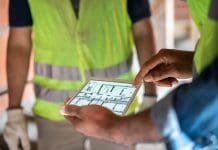James Ritchie of The Association for Project Safety advises on who can actually take on the role of Principal Designer and the legal responsibility for CDM duties within a construction project…
The amount of incorrect information regarding the Construction (Design & Management) Regulations 2015 (CDM2015) that is being written in magazines is really quite worrying – especially as much of it is coming from lawyers who should know better about being sure of their facts before going into print. The regulations have been very carefully written and their precise words are the law, not one’s interpretation of what you think they are trying to say.
One of the areas where there seems to be a degree of misunderstanding is around the issue of who can be a Principal Designer (PD). Quite a lot of published articles say that the former CDM coordinator cannot be the PD, but that is absolute rubbish if the CDM coordinator is also a designer, as indeed a large number are. In fact those former CDMCs who are also designers are extremely well placed to be a PD.
In a perfect world, the best person or organisation to be the Principal Designer is the lead designer on a project. But for them to be able to take on that role they need to have sufficient skills, knowledge and experience with regard to health and safety, and the technical ability and skills to be in control of the pre-construction phase.
A PD must be a designer that currently designs – not someone who has retained their design institute membership but has not actually undertaken design for quite some time. This is important, as to discharge the PD role you need to be up to speed with design, design issues, and the development that the construction industry has undergone over recent years.
What is also clear, and has been confirmed by the HSE, is that:
- The Principal Designer role does not have to be undertaken by a designer working on the project in a technical capacity. Yes this is the ideal scenario but it is not law;
- The Principal Designer can employ others to assist them to discharge their duties, but by doing so they cannot offset their legal duties under the CDM Regulations.
The problem faced by the industry is two-fold
Firstly, some design institutes are not adequately advising their members that they need to have health and safety skills, knowledge and experience – as set out in CDM2015. The CDM2015 Regulations are a subset of the Health and Safety at Work etc Act and, as such, are regulations about health and safety only, not whether or not an architect knows how to design a building technically.
Secondly, there are still numerous architects and building surveyors who know precious little about CDM and design risk management and are being scared by messages that they must be the PD on their projects. This is not true for all projects. On domestic projects they may well be the only designer and therefore almost certainly will be the PD, especially if the client does not appoint anyone else, but on commercial projects and larger domestic projects that is not the case.
It is very important to understand that the requirement for the PD to have health and safety skills, knowledge and experience, is in proportion to the nature, size, and complexity of the project in question. For most domestic projects, an architect with some design risk management training should be capable of undertaking the PD role without assistance. They certainly should not require the appointment of a sub-consultant adviser, unless the project happens to be a something like a million pound mansion in Surrey with a basement swimming pool!
For commercial and larger projects the issues around design and construction health and safety tend to become more complex, and in those situations it would be prudent for the person or organisation being offered the PD role to consider whether or not they have the necessary health and safety skills, knowledge and ability to plan, manage, and monitor the pre-construction health and safety and then coordinate the matters arising from this process. In these situations it may be prudent for the designer, if they don’t have these skills within their organisation, to consider employing someone with the right capability to assist them with the PD duties. An alternative, longer term, approach would be for the designer to undertake training on how to discharge the PD role.
Clients should be very wary of asking designers to undertake the PD role without checking that they do have the right skills, knowledge and experience as the CDM2015 Regulations place a strict duty on the client to ensure that both the Principal Designer and Principal Contractor comply with their duties. In addition, the success of the project in terms of health and safety relies heavily on how well the pre-construction phase is planned and managed, and as we have learnt over the last 20 years, good health and safety is good for business.
So how can a client determine if the person or organisation they are appointing is suitably capable to discharge the Principal Designer role? Because of the need for skills, knowledge and experience to be proportionate to the project requirements, being on a register of Principal Designers does not necessarily determine if they are capable of undertaking the specific project. The client needs to do some ‘digging around’ to find out firstly if they are a designer and then secondly what training the designer has had regarding health and safety, and in particular the coordination of pre-construction health and safety, and then look at their experience of similar projects. Accreditation with Safety Schemes in Procurement (SSIP) as a PD will also be a starting point for larger practices.
Essentially, the PD role can be undertaken by any person or organisation that undertakes design and has the right mix of health and safety skills, knowledge and experience. This could be an individual, a design practice, a local authority with a technical department or a client employing a CDM Adviser and instructing designers under their control. ‘Under their control’ means having a contract with them for their design services and paying them accordingly.
All of this will, no doubt, come out in the wash over the coming months but the industry needs clear advice on these issues from the start if we are to avoid months of confusion and people taking on legal responsibility for CDM duties that they don’t actually have the capability to discharge. ■
. . . . . . . . . . . . . . . . . . . . . . . . . . . . . . . . . . . . . . . . . . . . . . .
James Ritchie BA BArch RIBA RMaPS
Head of External Affairs and Deputy Chief Executive
The Association for Project Safety
Tel: 0845 2691847
james@aps.org.uk













